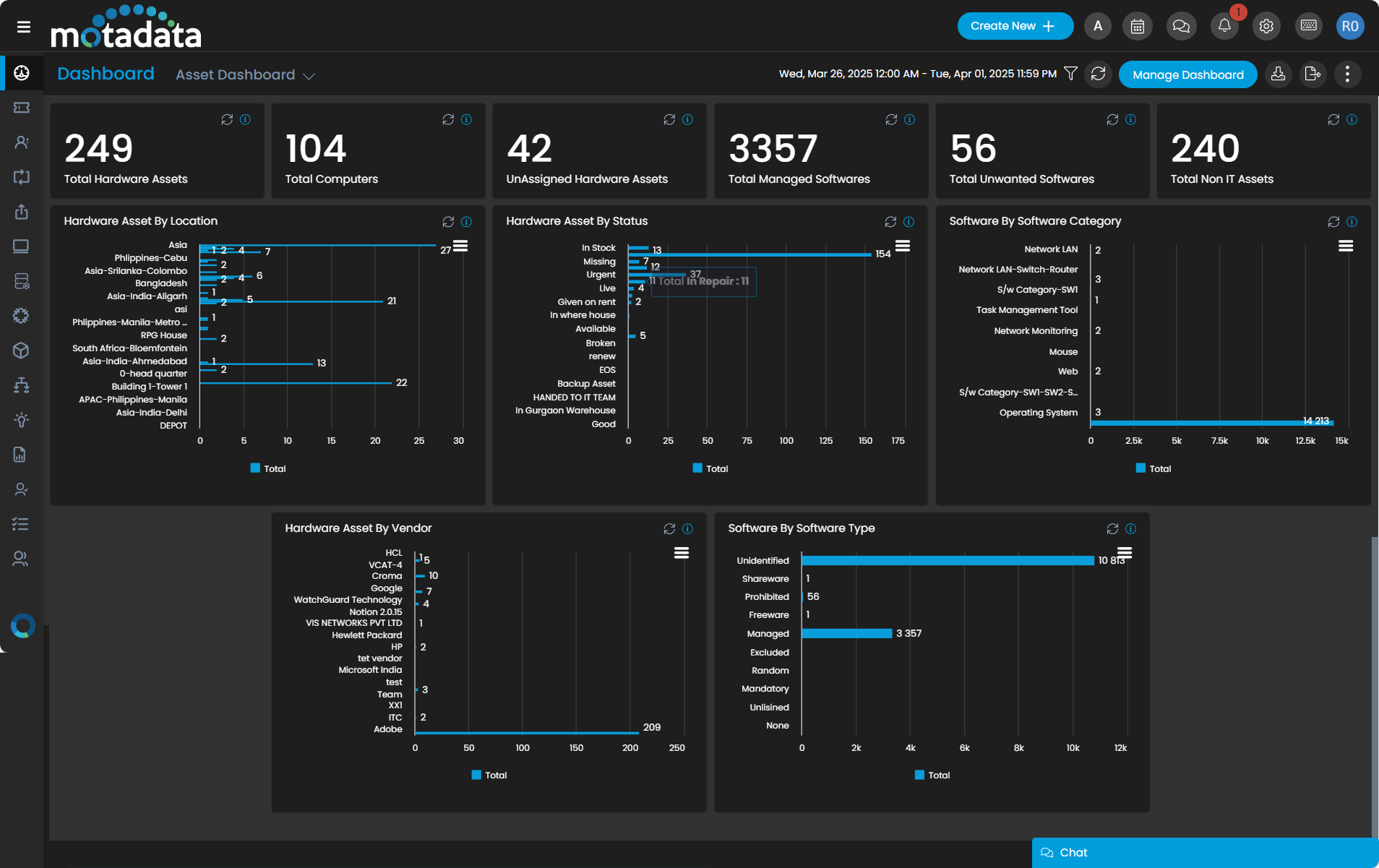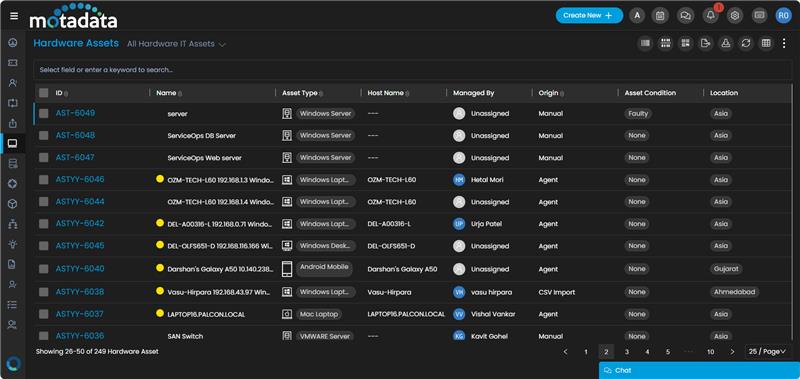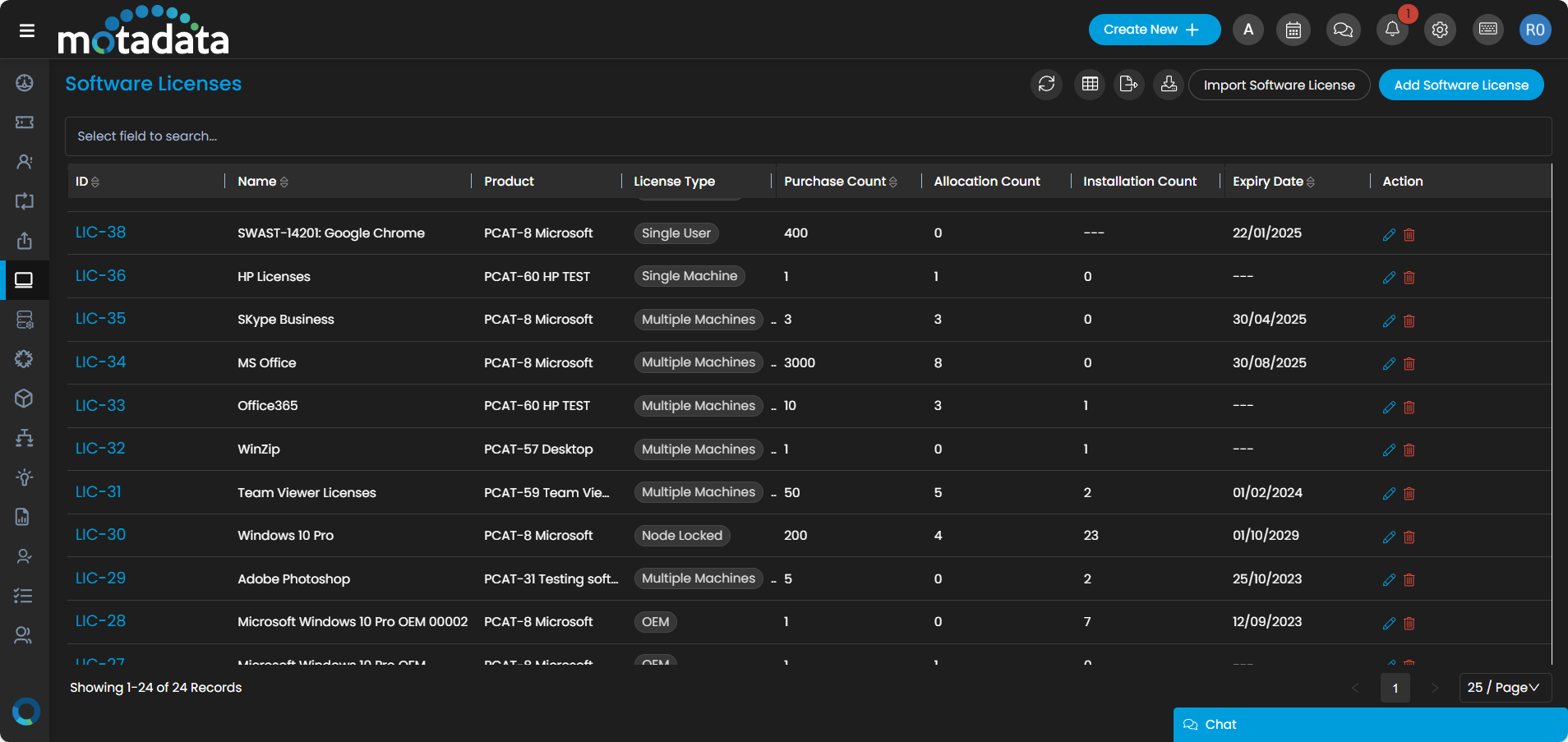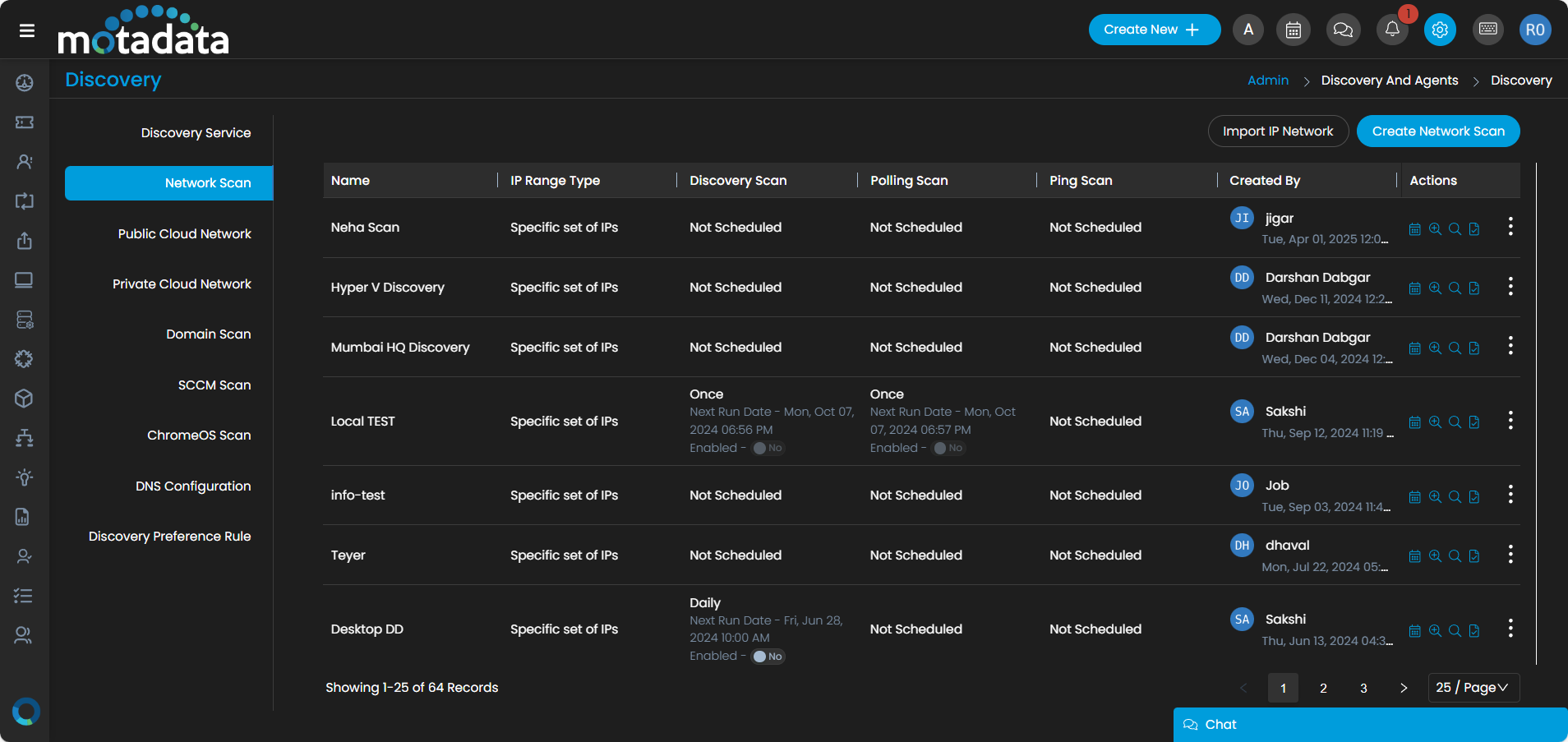Introduction
With evolving technology, the number of assets used in an organization is increasing. Businesses rely more on the hardware assets to get their work done smartly and efficiently. And to manage theses valuable assets an efficient Hardware Asset Management solution is required that can take care of them right from their entry in the organization till their exit disposal. It is a comprehensive approach to tracking, managing, and maintaining an organization’s IT hardware throughout its entire lifecycle.
What is Hardware Asset Management?
Hardware assets are devices that can be touched and felt like servers, laptops, printers, etc. It also covers storage and networking machines like routers, switches, and hard disks. To manage these manually, a well-organized Hardware Asset Management system plays a critical role. It involves tracking, monitoring, and managing an organization’s physical IT assets. Thereby ensuring these assets are optimized, maintained, and retired efficiently while meeting compliance and security standards.
Why Hardware Asset Management is Important for Organizations
With its numerous benefits, Hardware Asset Management has become an essential component of modern organizations. Some of the key reasons why it is important include:
Cost Optimization
Hardware Asset Management maximizes efficiency by helping organizations know the exact asset requirement or their working condition based on which decisions can be made regarding their usability and purchase. This minimizes the unnecessary expenses. Thus, with accurate asset tracking, duplicate purchases can be avoided, increasing the lifespan of existing hardware and ensuring timely reuse or retirement of less utilized or outdated devices.
Compliance and Security
Organizations must follow the defined compliance regulations and security policies to stay in the market. HAM ensures that all hardware assets meet the data protection laws and licensing agreements. It also helps reduce security risks by keeping track of release updates, patch management, and decommissioning processes to prevent data breaches or unauthorized access.
Operational Efficiency
With no structured system, managing IT hardware can become a nightmare, resulting in downtime and unnecessarily haphazard. Hardware Asset Management with features like Workflows, auto-assignment, and auto-discovery helps automate and streamline asset tracking to a great extent.
Asset Tracking
When organizations have multiple offices, keeping track of all the IT hardware assets is a real task. With features like geo-location, barcode reading, QR code, ownership, usage history, Dashboard, and reports, the administrators can get a complete visibility of the assets. Also, Asset movement and transfer track the assets’ whereabouts from the workplace to the repair place and vice-versa. This greatly helps prevent asset misplacement, theft, or loss while enabling better accountability and resource allocation.
Informed Decision-Making
Be it IT-related or financial, all decisions are made based on data. This data can be fetched with the help of reports or viewed from the Dashboard. ServiceOps Hardware Management provides an exhaustive list of OOB and custom reports on asset relations, utilization, lifecycle status, and depreciation. This insight helps the organizations analyze the data and make informed decisions, ensuring that the resources are aligned correctly at the right location and place, resulting in future growth.
Challenges of Hardware Asset Management
With benefits come challenges also. Also, managing hardware assets in large organizations is a significant challenge. Some of them are:
1. Absent or Manual Inventory Management: Even now, some companies use the old spreadsheet methods to track and manage the hardware assets, resulting in inaccurate and inconsistent data. Without a hardware asset management tool where most tasks can be automated, the IT teams struggle to keep records of all the assets and their statuses, whether in repair or outside the office premises. This increases the risk of assets not being documented, stolen, or lost.
2. Hardware Change and Obsolescence: Technology is evolving continuously with time, and hardware assets have a limited lifespan. Hence, constant monitoring of outdated assets is required, which sometimes becomes too tedious. Moreover, failing to replace obsolete devices on time may lead to performance concerns, security risks, and increased maintenance costs.
3. Service and Support: Since the assets are managed manually, ensuring timely maintenance and support can be stimulating. Additionally, improper technical support may result in downtimes and disturbances in business functions. Hence, proper service and support are required for smooth procedures.
4. Lack of Visibility: When assets are managed manually in tools like physical registers or spreadsheets, instantly searching for the required resource is a serious task. Hence, IT teams lack real-time visibility into asset utilization, location, and overall performance without proper asset-keeping.
5. Effective Communication Between Teams: Hardware asset management brings various teams together to make the asset management system successful. It includes IT, procurement, finance, and security teams where proper and accurate communication is necessary. Lack of communication among these may result in confusion, delays, and operational inefficiencies.
Primary Components of Hardware Asset Management
The main elements of ServiceOps hardware asset management include:
1. Hardware Inventory:
Maintains a centralized record of all physical assets, including specifications, software installed in the hardware devices, the users to whom the asset is assigned, relationships, linked items, locations, and the financial or purchase details, along with the depreciation.
2. Asset Identification and Tagging:
When there are numerous assets in the office, identifying them becomes difficult. Hence, the HAM provides unique identification features, like barcodes, tags, and QR codes, that help to maintain their records.
3. Asset Lifecycle Management:
Hardware Asset Management takes care of the assets throughout their existence in the organization. With the help of the different stages from purchase to disposal, the asset’s journey is smartly tracked.
4. Maintenance and Repairs:
The ServiceOps Asset Movement feature tracks the assets moving in and out of the organization for repairs, replacements, or trials. The Asset Movement Tracking feature ensures these transitions are recorded, monitored, and managed efficiently. It helps maintain a clear record of asset locations, approvals, and return statuses. In some cases, prior approval from the respective department head is required, and a valid Asset Gate Pass is issued to ensure smooth clearance through security checkpoints.
5. Software Asset Integration:
This feature links hardware with installed software, ensuring seamless integration for proficient license management and compatibility. It helps organizations track software installations on specific devices and verify compliance with licensing agreements.
6. Reporting and Analytics:
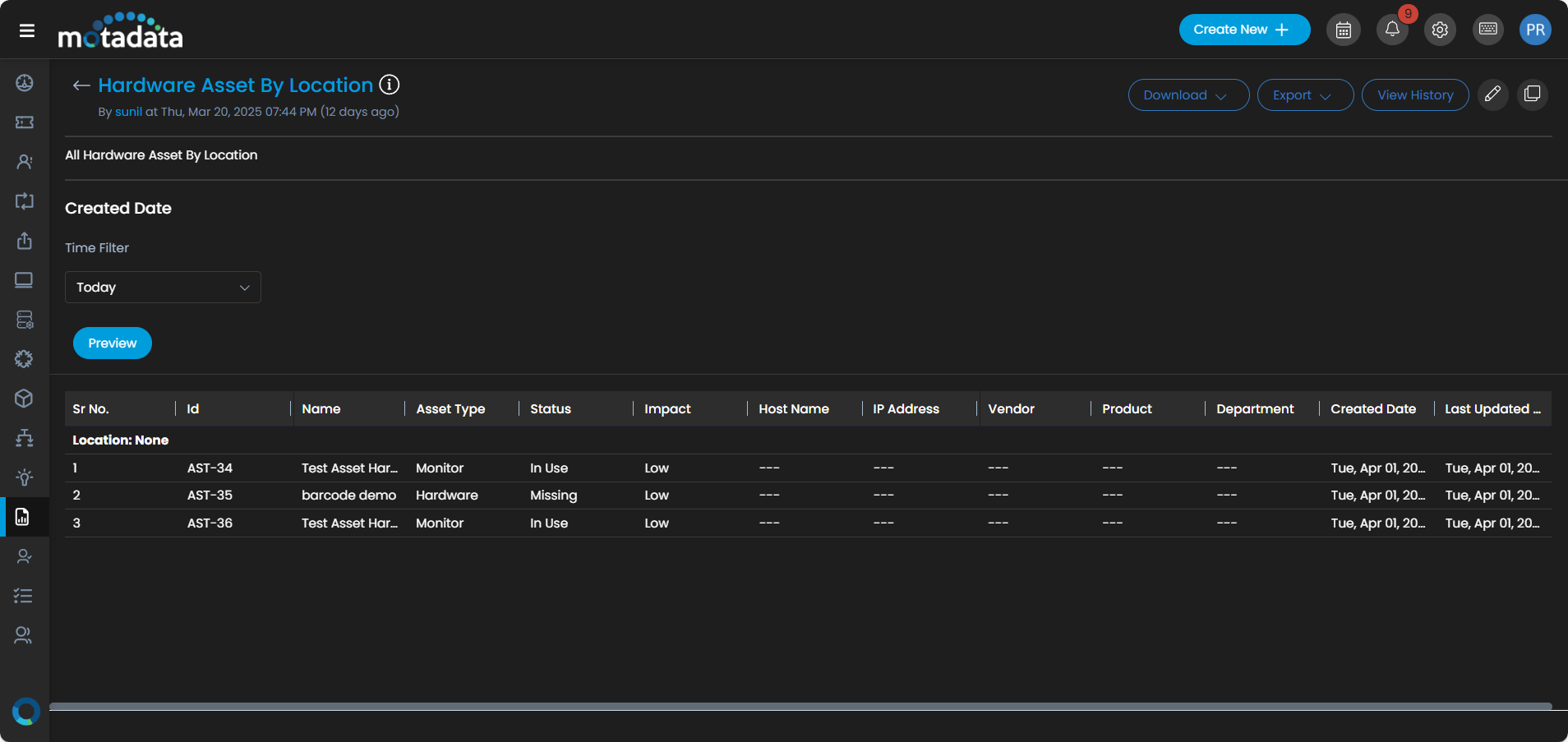
7. Software License Management:
Every business must comply with certain rules and regulations. And Software License Management helps maintain compliance by vigorously monitoring software licenses associated with hardware assets. It records license usage, expiration dates, and renewals to prevent unauthorized or expired software usage. Additionally, it ensures that the organization is neither under-licensed nor over-licensed, optimizing software investments.
8. Audit and Compliance Management:
Maintaining a detailed audit trail is essential for tracking changes in asset configurations, assignments, and transfers. The HAM Audit Trail feature records all the changes performed on the asset. For further investigation, these records can be exported in PDF, Excel, or CSV formats. This feature allows organizations to identify and reduce compliance risks while ensuring operational integrity.
What is the Hardware Asset Management Lifecycle?
The hardware asset management lifecycle describes the stages the hardware asset passes throughout its life.
The stages include:
1. Asset Request: The asset lifecycle initiates when an employee or department raises a request for a hardware asset. For example, a Laptop. Once the request is raised, it is evaluated based on the business needs, availability, and budget limitations. Approval workflows may involve department heads, IT teams, and procurement managers to ensure alignment with the company policies.
2. Procurement: Once the request for a laptop is approved, purchased, leased, or rented based on financial considerations. This stage involves selecting vendors, pricing negotiations, contract agreements, and purchase orders. Also, its entry is made in the ServiceOps Asset Management system.
3. Deployment and Configuration: Once the laptop is procured, it is installed, configured, and assigned to the required end-user or the designated location. The asset (laptop) becomes fully functional and integrated into the organization’s IT infrastructure at this stage. All the required software, drivers, and security protocols are installed to comply with the company policies.
4. Maintenance and Repair: Regular maintenance is conducted to ensure optimal performance and longevity of the asset. In this stage, the Asset Movement feature ensures that the faulty hardware (if laptop) sent for repair or transfer is documented and retrieved on time.
5. Decommission: When the laptop reaches the end of its useful life or is no longer needed, it is removed from active use. Also, to prevent unofficial access, data security measures like data archiving or purging rules are implemented.
6. Retirement & Disposal: Once the asset (laptop) is decommissioned, it can be retired and disposed of as it is no longer required. Retired assets are either resold, recycled, or disposed of in line with environmental and regulatory standards. Thus, once the asset is retired, its status is updated in the ServiceOps Asset Management system, ensuring the inventory is up-to-date.
Thus, by systematically following and managing this lifecycle, organizations can reduce costs, improve productivity, and ensure compliance.
Benefits of Hardware Asset Management
Incorporating hardware asset management into your organization brings a number of benefits. These include:
1. Cost Reduction:
HAM provides the administrators with an overview of the active assets and their utilization. This ensures that the resources and devices are allocated wisely, preventing over-procurement and minimizing redundancy. Also, with the help of a single application, all the assets can be managed from one place, reducing the workforce requirements.
2. Improved IT Efficiency:
HAM modernizes the asset discovery and documentation process by allowing administrators to add assets in bulk, cutting down the need for manual entries. This significantly reduces the asset registration and management time. Furthermore, automation features like workflows, auto-assignment, schedulers, and form rules reduce the amount of human involvement. This lets the IT teams focus on more critical tasks, ultimately enhancing productivity and confirming smoother IT procedures.
3. Enhanced Security and Compliance:
With Custom Rules and Form Rules, the IT teams remain relaxed as these ensure that the assets adhere to the company standards and policies. Also, one can restrict certain suspicious IP addresses from accessing the internal resources. It helps track device ownership, prevent unofficial usage, and enforce data security protocols, reducing vulnerabilities.
4. Strategic Decision-Making:
With the help of OOB and custom Dashboards and Reports, one can fetch and view all the required data. Based on this data, strategic decisions can be made about the purchase, maintenance, and upgrades. Better forecasting and budgeting can be achieved.
5. Time-Saving:
In this digital era where time is money, hardware asset management tools have become a boon for businesses manually managing large volumes of assets. It provides features like scheduled discovery, bulk operations, scheduled notifications, etc. These automatic capabilities enable the users and the IT team to perform their tasks more speedily and accurately, saving considerable time. This boosts productivity and return on investment.
6. Centralized Information:
All hardware asset details—such as purchase records, warranty status, maintenance history, and ownership details—are stored in a single, unified system. This eliminates data silos and enables efficient asset lifecycle management.
7. Remote Access:
A Hardware Asset Management system provides the IT team with a remote access feature that enables access to resources located across various locations. This functionality is valuable for troubleshooting, monitoring, and accessing internal resources. It is more useful for remote employees, ensuring they receive uninterrupted IT support and access to the required resources.
8. Automatic Discovery:
Automating the discovery process via Scheduler ensures accurate, real-time visibility of all connected devices, streamlining operations and boosting security. Thus, automatic asset discovery simplifies IT management while eliminating the need for manual effort. Also, discovery patterns can be used to retrieve the custom data fields.
Hardware Asset Management vs. Software Asset Management
Hardware Asset Management and Software Asset Management are important components of IT Asset Management, but they emphasize different aspects of asset tracking and optimization.
| Hardware Asset Management | Software Asset Management |
|---|---|
| It focuses on the physical, tangible IT assets of an organization. For example, Computers, Servers, Network devices, and peripherals. | It focuses on software applications, licenses, and compliance. For example, Software Licenses, Subscriptions, and Digital applications. |
| Tracks asset location, ownership, utilization, depreciation, and maintenance. | Tracks license compliance, software usage, renewals, and version upgrades. |
| Ensures compliance with hardware maintenance policies. | Ensures compliance with software licensing agreements |
| Ensures hardware security by tracking devices that are repaired or stolen. | Prevents security risks by monitoring software vulnerabilities, ensuring patches, and managing user access. |
Conclusion
Thus, organizations must use a best-fit Hardware Asset Management system to effectively manage their physical IT assets throughout their lifecycle, ensuring optimal utilization, compliance, and security. HAM enhances operational efficiency and reduces costs. Embracing HAM practices enables informed decision-making and fosters a well-organized IT infrastructure.

